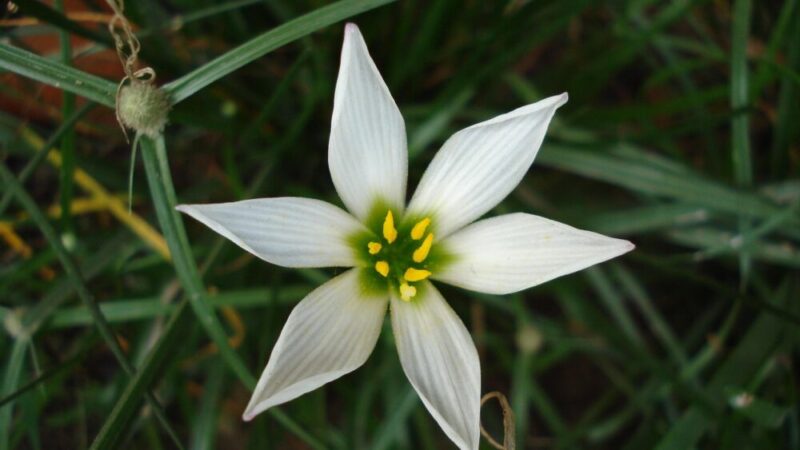Wintering of the garden star-of-bethlehem

Ensuring the garden star-of-bethlehem successfully overwinters is a straightforward process, as this bulbous perennial is naturally well-adapted to withstand cold temperatures. Hailing from regions with distinct seasons, it possesses an inherent hardiness that allows it to survive freezing conditions while dormant underground. The key to successful wintering lies not in complex procedures, but rather in ensuring the fundamental growing conditions are correct before the onset of winter. The most critical factor, as with its overall care, is excellent soil drainage. Dormant bulbs are far more likely to succumb to rot in cold, wet soil than they are to be damaged by the cold itself. Therefore, the preparations for winter truly begin with the initial planting and site selection.
Once the plant has completed its life cycle for the season—flowering in the spring and then allowing its foliage to die back completely by early summer—the bulb enters a state of dormancy. It will remain in this resting state throughout the summer, autumn, and winter, patiently waiting for the warmth of the following spring to signal the start of a new growth cycle. During this extended dormant period, the bulb is largely self-sufficient, relying on the energy it stored during the spring growing season. Your primary role as a gardener during this time is to ensure its resting place remains undisturbed and not overly saturated with water.
In most gardening zones where it is rated as hardy, typically USDA zones 4 through 9, the garden star-of-bethlehem requires very little specialized winter care when planted in the ground. The soil itself provides a significant amount of insulation, protecting the bulbs from the harshest temperature fluctuations at the surface. However, applying a layer of organic mulch in late autumn can provide additional insurance, especially in colder climates or during winters with little snow cover, which itself acts as a natural insulator.
For plants grown in containers, the approach to wintering needs to be slightly more deliberate. The soil in pots is far more exposed to ambient air temperatures and can freeze solid much more quickly and deeply than the ground. This exposure can potentially damage or kill the bulbs. Therefore, container-grown specimens require additional protection to ensure their survival through the winter months and their triumphant return in the spring.
Preparing garden beds for winter
As autumn progresses and the gardening season winds down, a few simple steps can help prepare your garden beds where the garden star-of-bethlehem lies dormant. The most important task is to ensure the area is clean and free of weeds. Removing any weeds that have sprouted during late summer or early autumn will prevent them from competing with the bulbs for nutrients and water when they emerge in the spring. A clean bed also reduces the number of places where pests or disease organisms can overwinter.
More articles on this topic
After cleaning the area, the single most beneficial action you can take is to apply a layer of mulch. This should be done in late autumn, after the first few light frosts but before the ground freezes solid. A two- to three-inch layer of organic mulch, such as shredded leaves, pine straw, or wood chips, serves several important functions. It provides an insulating blanket over the soil, which helps to protect the dormant bulbs from extreme cold and the damaging effects of repeated freezing and thawing cycles.
This insulating layer of mulch helps to keep the soil temperature more stable throughout the winter. Cycles of freezing and thawing can cause the soil to heave, which can potentially lift the bulbs upwards or damage their developing roots. By moderating these temperature swings, mulch ensures the bulbs remain safely in their dormant state until the consistent warmth of spring arrives. This prevents them from being tricked into sprouting prematurely during a brief mid-winter thaw, which could result in the new growth being killed by a subsequent hard freeze.
In addition to temperature regulation, the mulch will gradually break down over the winter, enriching the soil with organic matter. When spring arrives, this decomposed material will provide a gentle source of nutrients for the emerging plants. It also helps to conserve soil moisture and suppress the growth of early spring weeds. When you see the first green shoots of the garden star-of-bethlehem poking through in the spring, you can gently pull the mulch back a little to allow them clear access to sunlight.
Winter care for container-grown plants
Wintering the garden star-of-bethlehem in containers requires a different strategy than for those planted in the ground. Because the soil in a pot is exposed on all sides, it lacks the insulating capacity of the earth. In regions with freezing winters, the soil in a container can freeze solid, which is often fatal for the bulbs. The roots are particularly vulnerable to damage from the extreme cold. Therefore, you must take steps to protect the container and its contents from the harshest winter conditions.
More articles on this topic
One of the most effective methods is to move the containers to a sheltered location. An unheated garage, a cold basement, or a garden shed are all excellent options. The goal is to keep the pots in a location where the temperature will stay consistently cold, but above freezing, or at least not be subject to the extreme lows of the outdoors. The cold period is still necessary for the bulbs to bloom properly in the spring, so a warm indoor location is not suitable.
If you do not have a suitable indoor space for storage, you can protect the pots outdoors. One technique is to group all your containers together against a sheltered wall of your house, preferably one that receives some winter sun. Huddling them together reduces the surface area of each pot that is exposed to the cold air. You can then pile insulating materials like straw, shredded leaves, or even bubble wrap around and over the pots to create a protective barrier against the cold.
Another outdoor method is the “pot-in-pot” technique or simply burying the pot in the ground. You can dig a hole in a vacant spot in your garden and sink the entire container into the ground, up to its rim. The surrounding soil will then provide the necessary insulation to protect the bulbs, just as it would for plants planted directly in the garden. In the spring, after the danger of a hard frost has passed, you can simply lift the pot out of the ground and move it back to its desired location.
Water and moisture considerations
During the winter, the dormant bulbs require very little moisture. For plants in the ground, natural precipitation in the form of rain and snow is typically sufficient. The primary concern during winter is not a lack of water, but an excess of it. Soil that remains saturated and frozen can be deadly for the bulbs. This is why well-draining soil is so crucial; it allows excess water from melting snow or winter rains to percolate away from the bulbs rather than pooling around them and causing them to rot.
Avoid planting garden star-of-bethlehem in low-lying areas of your garden where water tends to collect. Also, be mindful of locations near downspouts or other areas where runoff is concentrated. If your garden has heavy clay soil that drains poorly, it is highly recommended to amend it at planting time or to plant the bulbs in raised beds, which provide superior drainage. These preventative measures taken before winter sets in are the best guarantee of the bulbs’ survival.
For containers that have been moved into a sheltered location like a garage or shed, some minimal watering may be necessary. The soil should not be allowed to dry out completely, as this can desiccate and kill the bulbs. Check the soil every month or so. If it feels bone dry, provide just a small amount of water—enough to slightly moisten the soil, but not enough to saturate it. The goal is to keep the soil barely damp to the touch throughout the winter storage period.
Once spring arrives and the ground thaws, the bulbs will begin their growth cycle, and their need for water will increase. As you see the new shoots emerge, you can resume your regular spring watering schedule. For overwintered pots, bring them out from their storage location and begin watering them as the temperatures rise. This transition from winter dormancy to active spring growth marks the successful completion of the wintering process.
Identifying and addressing winter damage
Even with the best preparation, winter damage can sometimes occur, especially after an unusually harsh winter or if preventative measures were not taken. One of the most common signs of winter damage is a failure of the bulbs to emerge in the spring. If your other spring bulbs are coming up but your garden star-of-bethlehem is nowhere to be seen, it is possible that the bulbs did not survive. This is most often due to rot caused by cold, wet soil.
Another potential sign of damage is weak or stunted growth. The plant may emerge, but its leaves may be sparse, and it may fail to produce flower stalks. This can indicate that the bulb was damaged but not killed outright. The damage may have been caused by frost heave, which can tear the roots, or by the bulb expending too much energy trying to survive extreme cold without adequate protection. In this case, the bulb may recover in subsequent years if provided with good care, but it may skip a year of flowering.
If you suspect winter damage, you can carefully dig up one or two bulbs for inspection. A healthy bulb will be firm, white, and plump. A bulb that has succumbed to winter rot will be soft, discolored, and mushy. If the bulb appears shrunken or desiccated, it may have dried out too much, which is a risk primarily for container-grown plants that were not monitored during winter storage. Unfortunately, if the bulbs are rotted or completely dried out, they will not be salvageable.
To prevent future winter damage, review your practices. Was the planting location one with poor drainage? Amending the soil with compost or moving the plants to a better-draining site can solve the problem. In colder climates, was a sufficient layer of mulch applied? Increasing the depth of the mulch can provide better insulation. For container plants, was the protection adequate? Perhaps moving them into a garage or providing more substantial insulation is necessary. Learning from these observations will help ensure better winter survival in the future.

















